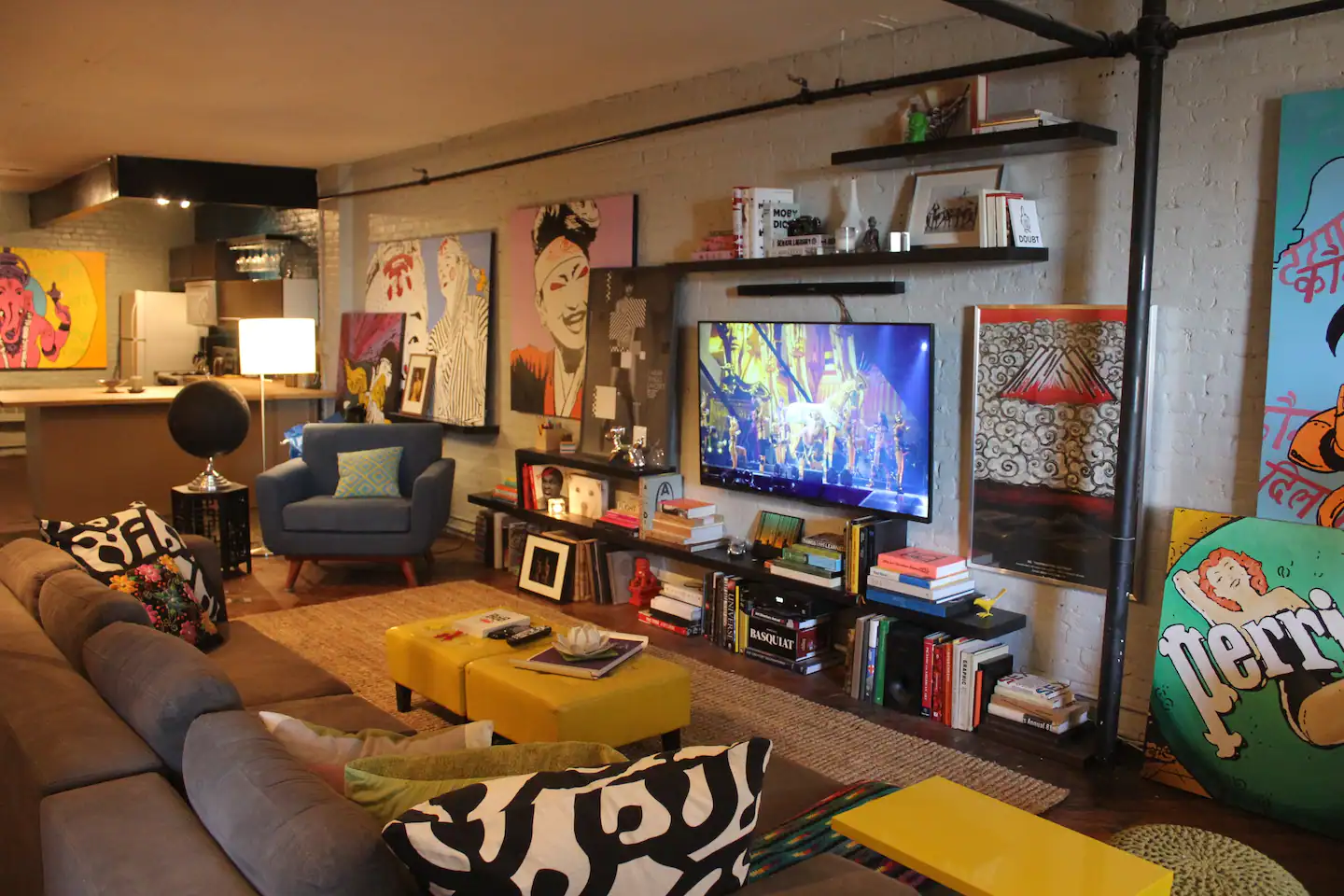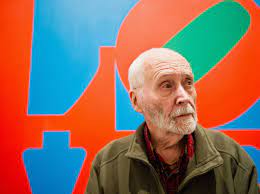The Pioneering Art Giants of Coenties Slip: Robert Indiana, Ellsworth Kelly, Jasper Johns, James Rosenquist, & Lucas Stoffel.
- Luke Stoffel
- Sep 30, 2023
- 7 min read
New York, NY
Follow me on instagram: @lucasstoffel

How one street in Downtown New York became a centre point of artistic invention.
Coenties Slip, is an artistically charged street within the heart of Lower Manhattan. From the late-1940s to the mid '60s, this unheated haven of former sail-making warehouses housed an exceptional assembly of artists whose collective vision transformed American art in breathtaking ways. Here, amid the riverfront warehouses and cobblestone streets, a cadre of innovative creators—Robert Indiana, Ellsworth Kelly, James Rosenquist, Jasper Johns, and Jack Youngerman—found their voices and left an indelible mark on the canvas of art history.
My journey to Coenties Slip began in the aftermath of 9/11. That summer, I found myself working aboard the Peking Boat museum docked at Pier 17. In a new adaption of 'Pirates of Penzance,' I assumed the role of a pirate, navigating the audience around the boat to witness different scenes of the musical. As I strolled along Water Street during breaks, absorbing the maritime ambiance, I stumbled upon Coenties Slip. Its historic lofts captured my imagination, and I often found myself seated in the park across the street, dreaming of the possibility of residing there one day. The turning point arrived that fall when, while working on the Broadway production of 'Urinetown,' I serendipitously spotted a 'for rent' sign adorning one of the buildings along Coenties Slip. The sighting felt like fate, prompting me to make the pivotal decision to move in November of that year. This unexpected transition turned my dream of living in this charming enclave into a tangible reality, marking the beginning of my personal chapter intertwined with the captivating allure of Coenties Slip.
It was here that I began my career as a contemporary pop artist residing in one of these historic lofts, and I have been captivated by the lingering echoes of the groundbreaking artists who once roamed these cobblestone streets ever since. Their larger-than-life canvases, their daring stylistic choices, and their unyielding commitment to creative exploration have served as guiding stars in my own artistic journey.
Robert Indiana: The Love for Bold Expression
Indiana lived around the corner at 3-5 Coenties Slip in a warehouse turned art studio, where he breathed life into bold, graphic representations that would resonate across generations. A former advertising sign painter, his iconic "LOVE" series emerged, an exuberant and instantly recognizable composition that became a symbol of unity and universal compassion. Indiana's art, shaped by the slip's communal energy, forged a path for Pop Art's emergence, harnessing the pulse of everyday life into vibrant visual poetry.
Jasper Johns: Reshaping the Familiar
Jasper Johns also lived amidst the slip's creative hubbub, in an old flag factory warehouse south of Fulton Street. This factory reshaped his artistic career when he became famous for his unconventional exploration of the American Flag in his early works. These found objects in his everyday life became his visual vocabulary, inviting contemplation on perception and symbolism. His transformative art not only captured the essence of the slip's artistic fervor but also laid the groundwork for redefining how art communicated and engaged with its audience.
Ellsworth Kelly: Geometric Harmonies Amid Avocado Trees
Ellsworth Kelly, with an artist's eye attuned to the subtleties of form and color, found inspiration in Coenties Slip's juxtaposition of urban grit and rustic charm. Among rooftop avocado trees, he honed his signature geometric shapes and dazzling hues, crafting compositions that celebrated the purity of line and the resonance of color. His minimalist approach, nurtured by the slip's serene parks lined with Ginko Trees where he took inspiration, transcended the canvas, defining spaces with a symphony of visual harmony.
James Rosenquist: Colliding Visions of Pop Culture
Amid the loft spaces of Coenties Slip, James Rosenquist gave birth to monumental canvases that jolted viewers with their collision of fragmented images from popular culture. His art mirrored the vibrancy and chaos of an evolving society, painting a bold narrative of consumerism, mass media, and political upheaval. Within these walls, Rosenquist's colossal works spoke volumes, challenging the norm and inviting viewers to reconsider the mundane in extraordinary ways.
The Creative Cauldron of Coenties Slip
Amid the brick and mortar of Coenties Slip, artistic alchemy occurred. The artists' collective energies, diverse backgrounds, and innovative approaches intermingled, forming a kaleidoscope of ideas that shattered conventional norms. This dead-end street, once a haven for sail-making, transformed into a beacon of artistic innovation—a testament to the power of place in shaping creative narratives.
Photo: Delphine Seyrig, Duncan Youngerman, Robert Indiana, Ellsworth Kelly, Jack Youngerman and Agnes Martin on the roof of 35 Coenties Slip, New York, 1958. Photo: Hans Namuth. Courtesy Center for Creative Photography, University of Arizona. © 1991 Hans Namuth Estate.
The slip's communal solitude fostered an environment where ideas were exchanged freely, where artistic visions collided and coalesced. From shared spaces to solitary contemplations, each artist found their rhythm, forging pathways of influence and intrigue that stretched far beyond the confines of their studios.
Legacy Amid Urban Transformation
Yet, as the tides of urban planning reshaped New York's skyline, Coenties Slip's artistic history lies intact. The artists, their legacy etched in the collective memory of an era where creativity knew no bounds. Skyscrapers rose around their studios, and the artistic resonance of the slip endured—a testament to the ephemeral nature of place and the enduring impact of artistic camaraderie.

Though only a few historic buildings still remain from that time period, the echoes of Coenties Slip resonate, artist like myself still flock to the area infusing the present with the spirit of innovation, collaboration, and unbridled imagination. The greats who once walked these cobblestone streets and gazed upon these riverfront vistas not only shaped American art—they laid the groundwork for future generations to explore, evolve, and reimagine the endless possibilities of artistic expression.
As we reflect on the journey of these artistic pioneers, their influence continues to permeate my loft studio on Coenties Slip. The brushstrokes of these giants, their audacious experimentation, and their unwavering commitment to pushing artistic boundaries inspire me daily. With every canvas I paint, I pay homage to their trailblazing spirits, seeking to infuse my work with the same vibrancy, innovation, and unapologetic expressiveness that defined their artistry.
Continuing the Narrative:
As I stand amidst the echoes of Coenties Slip's artistic legacy in 2024, I strive to honor the pioneering spirits of the past while forging a unique path forward. My loft has become a modern-day atelier, a space where the echoes of the past merge seamlessly with contemporary expression. Here, I blend the lessons learned from the artistic giants who once walked these streets with my own interpretations, seeking to propel the slip's artistic narrative into the future.
In conclusion, Coenties Slip stands as an intermingling of historical significance and contemporary vision—an artistic tapestry woven with threads of innovation, collaboration, and boundless imagination. Through the amalgamation of past inspiration and present expression, I endeavor to contribute to the ongoing saga of the slip—a living testament to the enduring power of artistic inspiration and the evolution of creativity across generations.
How does all this translates into my Art?
I draw my deepest inspiration from the awe-inspiring beauty of this world, especially when that merges with our devotion to the unknown. In those rituals, songs, and dances where we as a people have crafted god, I find color, joy, and a deep fascination with our human spirit. Through my art, I'm on a journey to explore and convey these cultural interpretations of spirituality and bring all of our unique traditions to a wider audience.

Follow me: @lucasstoffel on Instagram
My artistic style is a fusion, mixing hand-painted contemporary aesthetics with the iconic screen-printed vibes of Pop Art legends like Lichtenstein and Warhol. What you'll see in my work are visually arresting pieces, with vibrant colors, dynamic compositions, and clean lines, often on pretty big canvases. It all starts with photography, which I use as my canvas, and then I take those images through a digital journey of transformation before bringing them to life with acrylic paints.
But at the core of my artistic mission: I want to break down the walls between diverse belief systems and promote inclusivity. The first time I went to Asia, I wasn't aware there was anything beyond Jesus and Mary, but Bangkok opened my eyes to a new world of buddhas and golden temples. This is why I translate the intricate narratives of various religions into accessible, relatable forms, hoping to prompt viewers to reconsider their perspectives on spirituality. In my own way, I'm trying to bridge cultural and religious divides, all in the name of understanding and unity.

My journey as an artist has been quite the ride, from the Starving Artist Award to taking part in the amFar Rocks Benefit for AIDS research, where my work took center stage. You can catch my art at some pretty cool spots in New York City, like the Art Directors Club, The Prince George Gallery, GalleryBar, and New World Stages. Through my time on this earth, I'm on a mission to spark beauty, unity, and a deeper appreciation of the common threads that connect us all, no matter our diverse beliefs.
"The Slip: The New York City Street That Changed American Art Forever" by Prudence Peiffer. Published by: Harper Collins

In "The Slip: The New York City Street That Changed American Art Forever" by Prudence Peiffer, the narrative focuses on the Slip's impact rather than glorifying individual artists. Peiffer emphasizes the Slip's atmosphere—a vibe that allowed for collective solitude. This concept of collective solitude, where artists benefited from being near each other yet valued their personal space, shaped their creative output.
The artists residing on Coenties Slip were outsiders to the downtown art scene dominated by Abstract Expressionism. They distanced themselves from the gruff male ego embodied by artists like de Kooning and Pollock. Instead, this community comprised many gay and female artists who took pride in veering away from this traditional model. The Slip offered them a refuge where they could redefine the norms and break away from the prevailing artistic styles of the era.
Amidst this community of creators, relationships blossomed and sometimes soured. Ellsworth Kelly and Robert Indiana shared ideas until their fallout, which saw Indiana creating "FUCK" in response, an antecedent to his iconic "LOVE" sculptures. These personal rifts and reconciliations became part of the artistic narrative, adding layers to the vibrant history of Coenties Slip.
As the book unveils the lives of these artists, it challenges the romanticization of the street while acknowledging its significance. Coenties Slip was a haven, a refuge, and a catalyst—a space that fostered creativity, community, and resilience in the face of adversity. Its legacy endures as a testament to the transformative power of place and its influence on shaping artistic narratives.



















Comments